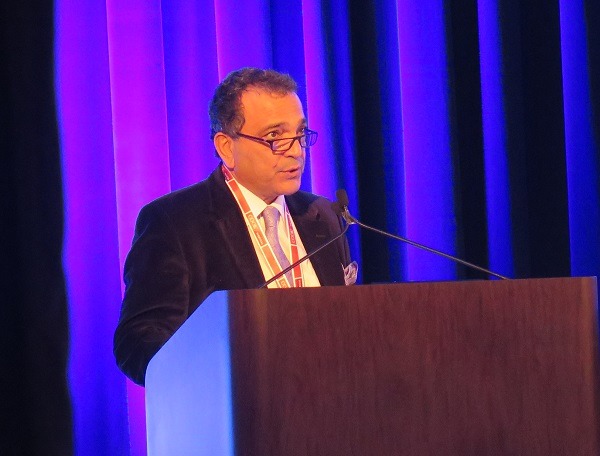
Fresh data from a Turkish CAPE (cyanoacrylate adhesive perforator embolisation) trial indicate that the method is “as effective as endovenous thermoablative techniques, without the risks of potential inadvertent thermal lesions” for treating incompetent perforating veins. The presentation was given by Kursat Bozkurt, Istanbul University, Istanbul, Turkey, at the 2016 VEITHsymposium (15–19 November, New York, USA).
Bozkurt and colleagues treated a total of 54 incompetent perforating veins in 50 patients (28 right legs and 26 left legs), of whom 32 were males and mean age was 50.8 years (range 30–82 years). Eight patients were classified as C4, 13 as C5 and 29 as C6. All patients had >3.5mm at the level of the fascia and residual or recurrent venous pathology related solely to the presence of incompetent perforating veins. Exclusion criteria included immobility, deep venous obstruction and concomitant truncal incompetency of the ipsilateral leg.
A conventional intravenous cannula was placed in the target vein using ultrasound guidance under local anaesthesia. Back-bleeding through the sheath was used as confirmation of intraluminal positioning. Bozkurt explained that the metallic part of the catheter was “perfectly visible” with sonography, making it possible to cannulate small vessels. The plastic part of the catheter “also had good visibility for perforating veins and for advancing tortuous veins”.
With the tip of the catheter localised just above the fascia level, the first 0.2cc was advanced and allowed to polymerise for two minutes without withdrawing the catheter tip. Then, after “the slightest possible withdrawal of the catheter tip,” a further 0.2cc was introduced to ensure occlusion. The remaining glue (at 0.2cc per 5mm) was then given for long perforating veins with 5mm pullback and one-minute polymerisation time. The catheter was withdrawn when ultrasound confirmed that the tip was exiting the vein.
Patients were given normal wound dressing and were ambulatory with no post-compression therapy. Bozkurt told delegates that his team did not hesitate to place the glue close to the skin, and although patients are aware of hardness in the treated area, “it does not cause any problems,” which is “the major advantage for glue ablation as compared to thermal ablation,” he explained.
A mean of 0.7mL of cyanoacrylate adhesive was used for each incompetent perforating vein. Bozkurt et al reported one thrombophlebitis, no deep venous thrombosis and no neurological damage.
Overall, Bozkurt reported an 81.4% (44/54) occlusion rate, with a 62.5% (10/16) rate from July 2014 to January 2015, and an 89.47% (34/38) rate from January 2015 to March 2016—“very successful results,” he said.
At six months, ulcer healing was seen in 58% (29/50) of C6 patients, of whom 93.1% (27/29) achieved successful follow-up. Of these, 92.6% (25/27) had healing of the ulcer, and 100% had healing with closed perforating vein.
For patients of C4/5 classification, AVVQ scores at six months had reduced from 24.8 at baseline to 12.3. For the C6 patients, scores fell from 38.25 to 13.7 at six months.
“These systems are not yet perfect, but they are improving,” Bozkurt told the audience, “and closure rates must be better; over 90%”. Furthermore, he said, tumescent anaesthesia may be considered for short and wide perforating veins.










